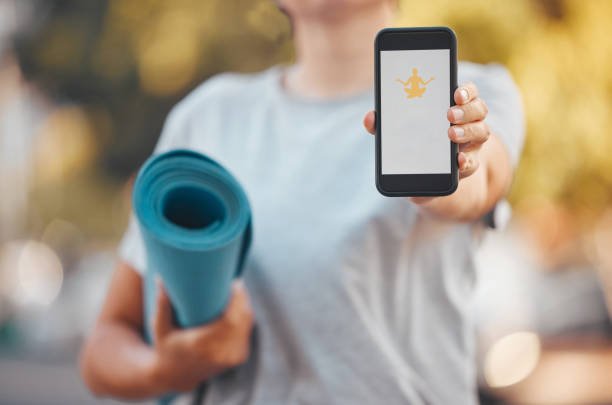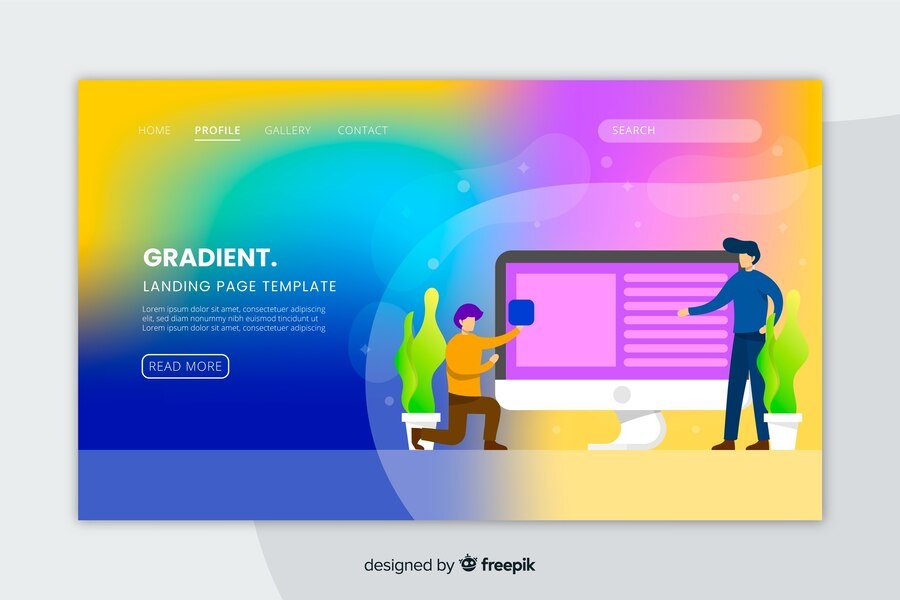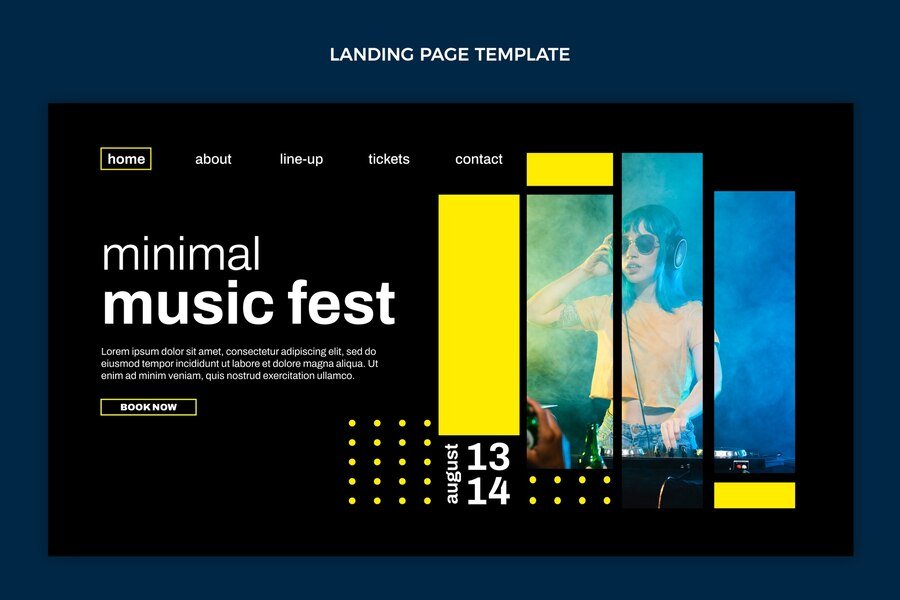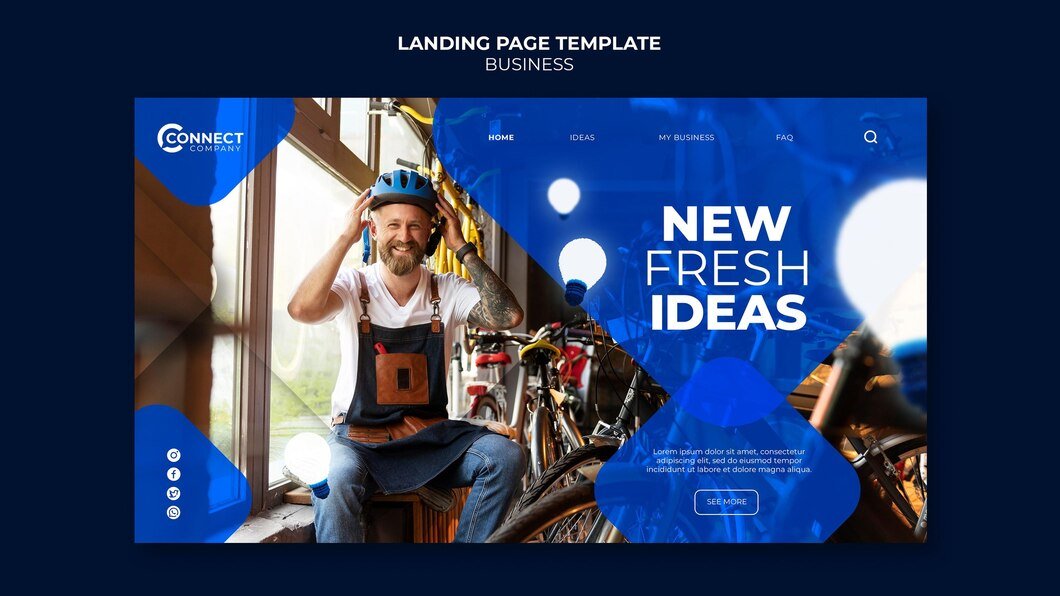Introduction
In today’s digital landscape, mobile design has become a crucial factor for the success of any website, including those dedicated to yoga. As more people access the internet via their smartphones and tablets, ensuring that your yoga website is mobile-friendly is not just an option—it’s a necessity. This article explores the importance of mobile design for yoga websites and provides detailed insights into how to optimize your site for mobile users.
The Rise of Mobile Usage
The prevalence of mobile devices has skyrocketed in recent years. According to recent statistics, over 50% of global web traffic comes from mobile devices. For yoga instructors and studios, this trend underscores the importance of having a website that performs seamlessly on smartphones and tablets.
1. Enhancing User Experience
User experience (UX) is a critical component of web design, particularly for mobile users. A website that is difficult to navigate on a mobile device can frustrate potential students, leading them to seek out other instructors or studios with more user-friendly sites.
Key Considerations:
- Responsive Design: Ensure your website layout adjusts smoothly to different screen sizes.
- Easy Navigation: Simplify your navigation menu for mobile users. Use drop-down menus and easily tappable buttons.
- Readable Text: Use font sizes and styles that are legible on smaller screens.
- Fast Load Times: Optimize images and minimize the use of heavy scripts to ensure quick load times.
2. Improved Search Engine Rankings
Search engines like Google prioritize mobile-friendly websites in their rankings. This means that if your yoga website is not optimized for mobile, it may struggle to rank well in search engine results pages (SERPs).
SEO Best Practices:
- Mobile-First Indexing: Google primarily uses the mobile version of a website for indexing and ranking. Ensure your mobile site is up to par.
- Page Speed: Mobile page speed is a significant ranking factor. Use tools like Google PageSpeed Insights to analyze and improve your site’s performance.
- Mobile-Friendly Content: Structure your content to be easily consumable on mobile devices. Use shorter paragraphs, bullet points, and clear headings.
3. Higher Conversion Rates
A mobile-friendly website can significantly increase conversion rates. Whether your goal is to get visitors to sign up for classes, subscribe to a newsletter, or purchase products, a seamless mobile experience can make all the difference.
Conversion Optimization Tips:
- Simplified Forms: Reduce the number of fields in your forms to make them easier to complete on mobile devices.
- Mobile Payments: Offer secure and easy-to-use mobile payment options.
- Clear CTAs: Use prominent and straightforward calls to action that are easy to tap.
Best Practices for Mobile Design on Yoga Websites
1. Use a Responsive Framework
Implementing a responsive design framework ensures your website looks great and functions well on any device. Frameworks like Bootstrap can help streamline this process.
Advantages of Responsive Frameworks:
- Consistency: Provides a consistent experience across all devices.
- Flexibility: Adapts to different screen sizes without the need for multiple versions of the site.
- Maintenance: Easier to maintain a single responsive site than multiple versions.
2. Optimize Images and Media
Images and media are essential for a visually appealing yoga website. However, they need to be optimized for mobile devices to prevent slow load times and poor performance.
Optimization Strategies:
- Compress Images: Use tools to reduce image file sizes without sacrificing quality.
- Use Adaptive Images: Serve different image sizes based on the user’s device.
- Lazy Loading: Implement lazy loading so images load only when they come into the user’s viewport.
3. Prioritize Content Hierarchy
On mobile devices, screen space is limited. Prioritize your content to ensure the most important information is easily accessible.
Content Prioritization Tips:
- Above the Fold: Place critical information and CTAs above the fold.
- Clear Headings: Use descriptive headings to guide users through your content.
- Engaging Visuals: Use images and videos strategically to engage users without overwhelming them.
4. Simplify Navigation
Navigation can be challenging on smaller screens. Simplify your menu to make it user-friendly for mobile visitors.
Navigation Best Practices:
- Hamburger Menu: Use a hamburger menu to keep the navigation clean and accessible.
- Sticky Navigation: Implement sticky navigation so the menu is always accessible as users scroll.
- Search Functionality: Include a search bar to help users find content quickly.
5. Leverage Mobile-Specific Features
Take advantage of mobile-specific features to enhance the user experience and engagement.
Mobile Features to Consider:
- Touch Interactions: Design elements that are easy to tap and interact with.
- Geolocation: Use geolocation to provide location-based services, such as finding the nearest yoga class.
- Push Notifications: Implement push notifications to keep users informed about new classes, events, or promotions.
Case Study: Successful Mobile Design Implementation
To illustrate the impact of effective mobile design, let’s examine a case study of a yoga studio that revamped its website with a mobile-first approach.
Background:
The studio noticed a decline in mobile traffic and conversions. After analyzing user behavior, they discovered that their website was difficult to navigate on mobile devices.
Implementation:
- Responsive Redesign: They implemented a responsive design framework to ensure a seamless experience across all devices.
- Content Optimization: They prioritized key content and used shorter paragraphs, bullet points, and clear headings.
- Image Optimization: Images were compressed and lazy loading was implemented.
- Simplified Navigation: A hamburger menu and sticky navigation were added.
Results:
- Increased Traffic: Mobile traffic increased by 40% within three months.
- Higher Conversion Rates: Mobile conversion rates improved by 25%.
- Better Engagement: Users spent more time on the site and viewed more pages.
Conclusion
The importance of yoga mobile website design cannot be overstated. With the majority of internet users accessing websites via mobile devices, optimizing your site for mobile is essential for enhancing user experience, improving search engine rankings, and increasing conversions. By following the best practices outlined in this article, you can ensure that your yoga website not only meets the needs of mobile users but also stands out in a competitive digital landscape.













